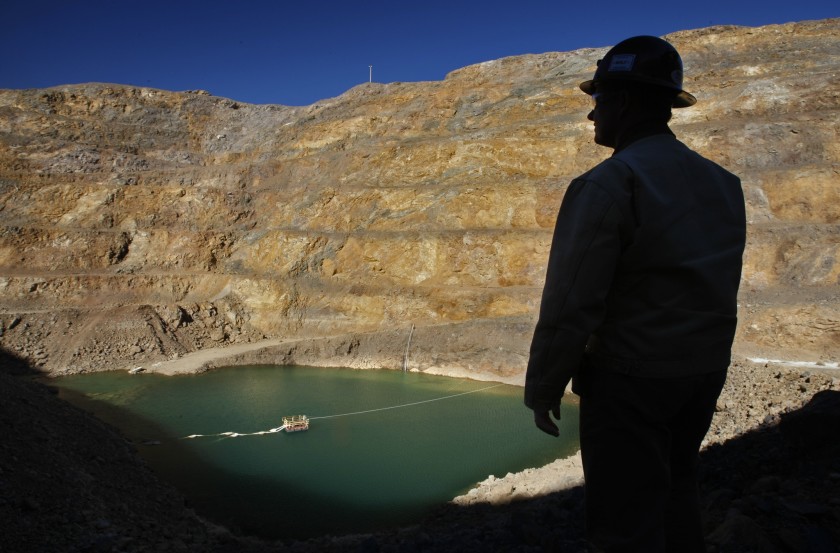SOURCE: Los Angeles Times
DATE: September 25, 2020
SNIP: It is five years since the giant trucks hauling ore around the Mountain Pass mine in California’s Mojave desert fell silent. Molycorp, the only major rare earths producer in the U.S., had just collapsed under the weight of a $1.7 billion debt. The bankruptcy burned investors and left the nation almost entirely reliant on China for the supply of 17 metallic elements that are embedded in most high-tech products from wind turbines to electric vehicles and F-35 fighter jets.
Now, as relations between Washington and Beijing deteriorate further, the U.S. government is supporting the resurrection of Mountain Pass, which until the 1980s was the world’s biggest producer of rare earths. Disruption to supply chains during the COVID-19 pandemic has underscored the need for the U.S. and other nations to ensure they are not reliant on a single country or company for vital supplies of raw materials and goods.
The Pentagon has agreed to fund MP Materials — a private equity backed company, which bought the mine for $20.5 million in 2017 and restarted excavations — to design the first heavy rare earths processing facility in the U.S. at the site. It is also backing a similar project in Texas proposed by Australian company Lynas, amid concerns that China could disrupt U.S. defense and other industries by withholding supplies of rare earths.
Beijing’s threat of sanctions on Lockheed Martin in July has added urgency to efforts to break China’s stranglehold over the industry. It controls four-fifths of the global mined supply of rare earths, and an even larger share of the manufacture of powerful rare earth magnets — industries worth $13 billion a year combined. The Trump administration earmarked $209 million in public funds for the sector — thought to include the funding for MP Materials — this year.
Washington is not alone in being concerned over Beijing’s control of rare earths. The European Commission is working on a raw materials strategy that aims to wean domestic industry off their dependence on China by boosting industry collaboration and providing sustainable finance for new producers. Australia, which holds one-sixth of the world’s rare earths deposits, has teamed up with the U.S. to source new deposits and support market entrants. And Russia has unveiled a $1.5 billion rare earths plan to tempt investors with tax breaks and cheap loans.
The sector — notoriously dirty, environmentally unfriendly business — is also plagued with technical complexity, a skills shortage in the West and a monopolistic market that hands pricing power to Chinese state-owned incumbents. When Beijing unexpectedly cut export quotas for rare earths in 2010 prices quadrupled — a surge that alerted Western nations to their reliance on China.
Rare earths — the 15 lanthanide elements on the periodic table plus two other related elements, scandium and yttrium — have become an integral part of modern life. More than 90% of hybrid and electric vehicles use rare earth-based magnets in their motors, while each F-35 fighter jet requires 420 pounds of rare earths materials.
Despite their name, rare earths are relatively abundant. But they tend to be widely dispersed, making them difficult to mine profitably. The process of separating them into commercially viable products also poses technical and environmental challenges, which have caused many new entrants to struggle.

